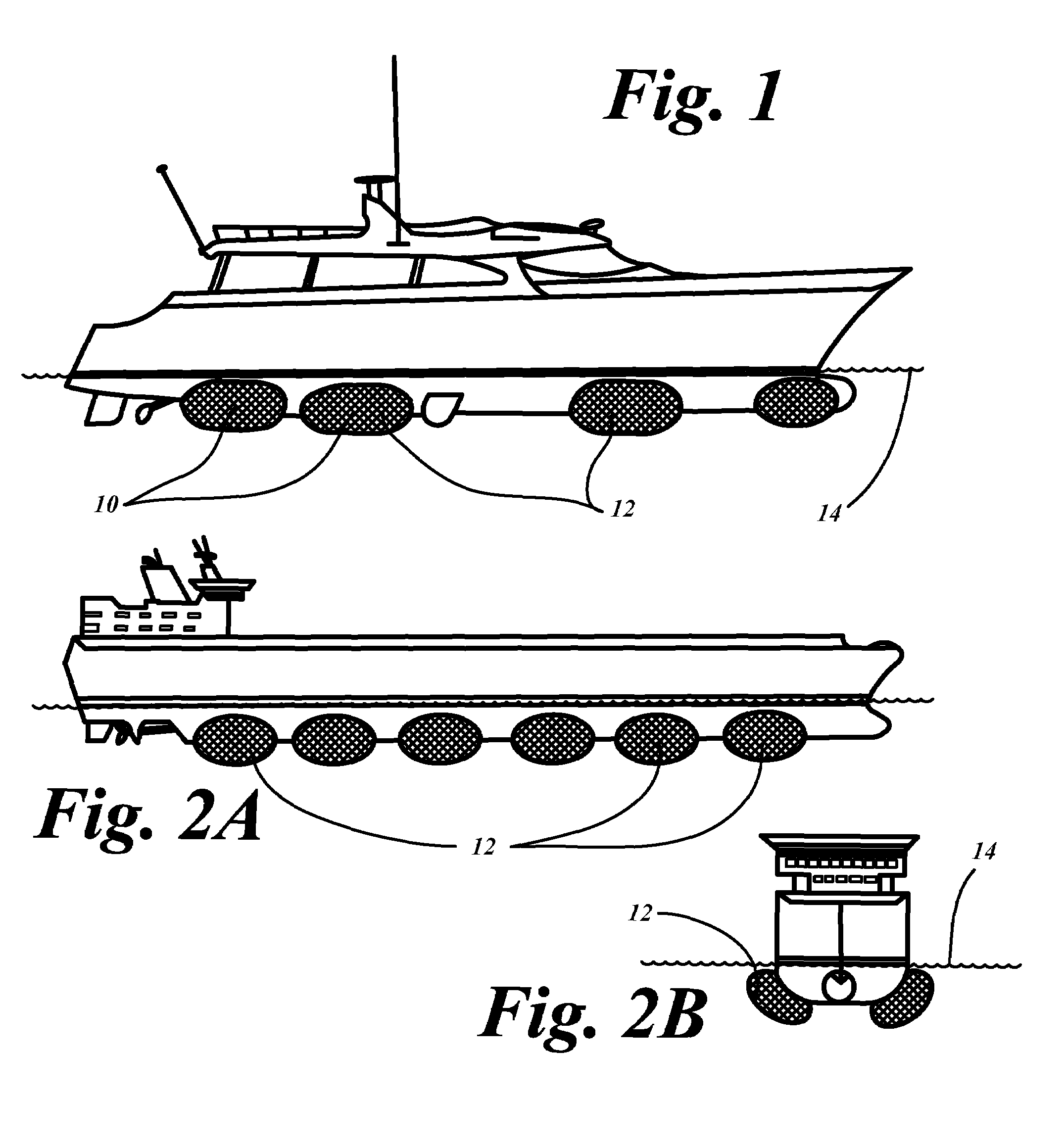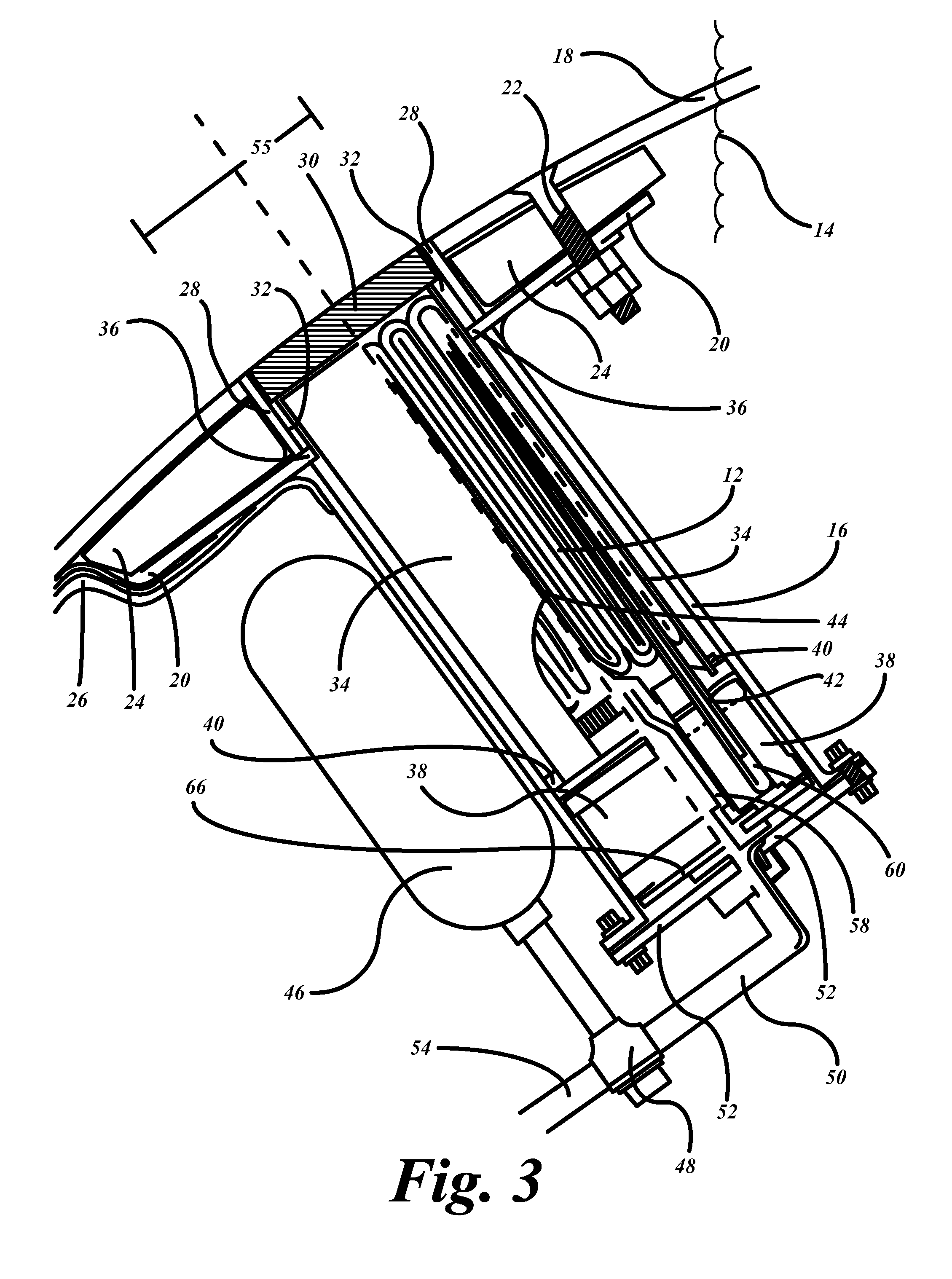Emergency encapsulated lift system
a lift system and encapsulation technology, applied in waterborne vessels, special-purpose vessels, vehicles, etc., can solve the problems of life and property lost on the water, system effectiveness, sailboats, recreational and commercial vessels and equipment alike are in danger of sinking, etc., and achieve the effect of large displacemen
- Summary
- Abstract
- Description
- Claims
- Application Information
AI Technical Summary
Benefits of technology
Problems solved by technology
Method used
Image
Examples
Embodiment Construction
[0025]Referring to FIGS. 1 and 2, a compact encapsulated lift system 10 includes air bladders 12 deployed from air, water, and other, vessels of varying sizes and geometries. For example, as shown in FIG. 1, luxury boat or yacht may deploy four air bladders 12 per side. Typically at least two air bladders 12 per side are used to provide stability. However, even only one or two bladders total may be enough to provide significant benefits. As shown in FIG. 2A, a much larger cargo ship may deploy six or more air bladders 12 per side. The displacement of the air bladders 12 may also be increased based on the size of the vessels to which they mount. As shown in FIG. 2B, the air or foam bladders 12 mount to both sides of the vessel, such as the cargo ship. In the embodiment of FIGS. 2A and 2B, the bladders 12 protrude from the vessel at an angle such that an outer surface of the bladders 12 approximates the orientation of the hull. As is apparent form FIGS. 1 and 2A and 2B, the bladders 1...
PUM
 Login to View More
Login to View More Abstract
Description
Claims
Application Information
 Login to View More
Login to View More - R&D
- Intellectual Property
- Life Sciences
- Materials
- Tech Scout
- Unparalleled Data Quality
- Higher Quality Content
- 60% Fewer Hallucinations
Browse by: Latest US Patents, China's latest patents, Technical Efficacy Thesaurus, Application Domain, Technology Topic, Popular Technical Reports.
© 2025 PatSnap. All rights reserved.Legal|Privacy policy|Modern Slavery Act Transparency Statement|Sitemap|About US| Contact US: help@patsnap.com



